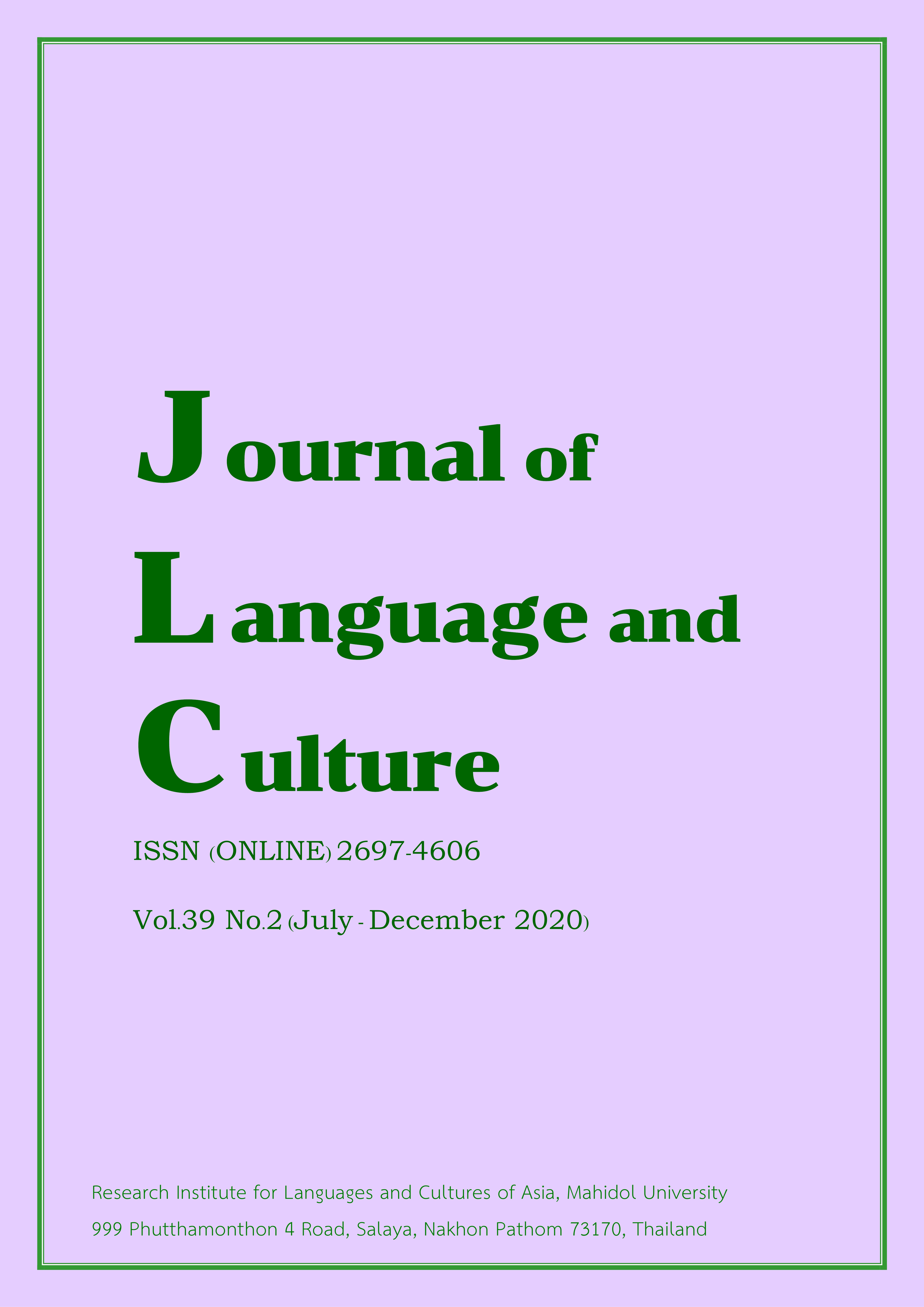“Ting–Krajad” Chinese festivals: The spatiotemporal representation of Chinese–Thai identity in Lao Zhou alley, Chiang Mai province
Main Article Content
Abstract
This article is based on a qualitative research aiming to illustrate the representation of “Ting-Krajad” festival in terms of the Chinese-Thai identity in the Lao Zhou Alley community in Chiang Mai province. The “Ting-Krajad” festival is part of a dynamic process that helps to strengthen the identity of this Chinese-Thai community, where perceptions and values are shared within this multicultural context. Drawing upon documentary analysis methodology,
in-depth interviews and observation were conducted on key informants, including the “Guan Yu” Chinese shrine keeper, members of the shrine, and villagers during the festival held in Lao Zhou Alley in Chiang Mai.
The results suggest that multiple representations of identity are constructed by the local community and visitors to the Guan Yu Shrine, which serves as a central space for the souls of the community. However, events that make up the Ting-Krajad festival have adopted a pattern of identity representation that incorporates “Thai”, “Lanna” and “Chinese” forms of faith as part of the traditional Ting-Krajad rituals. This manifests their multiple identities and provides an important mechanism for the preservation of the essence of Chinese culture, a dimension that is relevant to the current multicultural context and economy of Chiang Mai.
Article Details
The articles featured in the Journal of Language and Culture (JLC) constitute academic works representing the viewpoints of the respective author(s). It is crucial to note that these opinions do not necessarily reflect those of the Editorial Board.
All articles published in JLC are released under the Creative Commons Attribution 4.0 International License (CC BY 4.0). This license grants permission for unrestricted use, distribution, and reproduction in any medium, provided proper credit is given to the original author(s) and the source.


